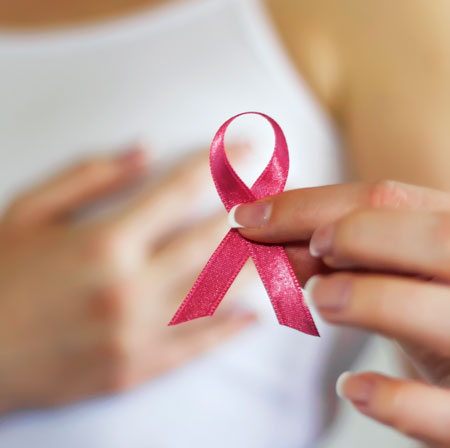
After the age of 40, women should receive a mammogram every year. Once a mammogram detects a spot that could be breast cancer, your doctor may request a breast biopsy to confirm whether it is cancer, a benign tumor or atypical hyperplasia.
This procedure involves taking a small piece of breast tissue from the area of concern using a needle. Your radiologist will then send the tissue for testing. Your doctor will use the information from your breast biopsy to diagnose your condition, develop a course of treatment or learn more about your condition.
A breast biopsy may be completed by your radiologist right after your mammogram detects a potential tumor. In some cases you may need to come back within a few days.
“If a patient comes in for a mammogram or ultrasound, we try to do a breast biopsy on the same day,” said Lee Anne Ryta, R.T., mammography team leader for Marshfield Clinic Health System.
Since your biopsy can help determine your diagnosis, the procedure and time spent waiting is often very stressful. If possible, Ryta recommends you bring family members with you to your biopsy appointment. Your biopsy care team will work with you and your family to answer questions you have about the procedure.
How it works
If you need a breast biopsy, your radiologist can choose from many different options. The option your radiologist chooses depends on your situation.
“We choose the type of biopsy that is best for that specific spot and its location. We also try to choose which is going to be easier for the patient,” said Ryta.
Your care team will first sterilize the breast and numb the area. They will then place a needle in your breast. He or she will use an ultrasound or mammogram to make sure the tip of the needle is in the right spot.
Once your radiologist confirms the needle is in the correct spot, a vacuum sucks pieces of tissue into the needle.
“We try to make sure each patient is comfortable and not feeling any pain during the biopsy,” said Ryta.
Your radiologist will then place a surgical clip in the breast. This helps mark the spot to help find the area for future procedures, such as a surgery to remove the spot or placement of a SAVI device.
Once the biopsy is complete, it typically takes three days to get the biopsy results. While a breast biopsy has low risks, there is a risk of bleeding and infection. Your care team will monitor you carefully for any complications.
For more information about breast biopsies, please talk to your doctor.






Leave a Reply